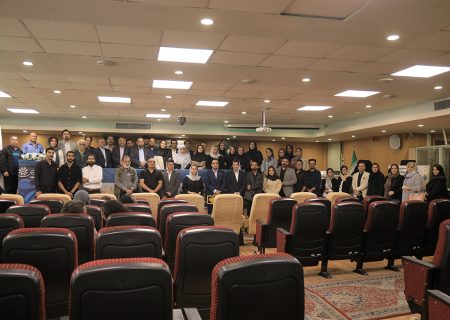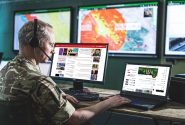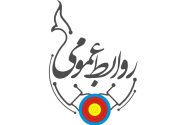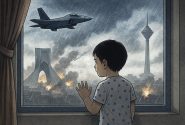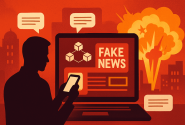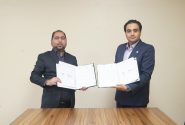نوع مقاله : پژوهشی
نویسندگان
- علی جعفری
- غلامعلی فرج زاده
علی جعفری: استادیار پژوهشگاه مطالعات آموزش و پرورش، سازمان پژوهش و برنامه ریزی آموزشی، (نویسنده مسئول) ،تهران، ایران.
غلامعلی فرج زاده: دکتری علوم ارتباطات، دانشگاه آزاد اسلامی، واحد اردبیل، اردبیل، ایران
https://doi.org/10.22034/bmsp.2023.343626.1806
چکیده
رسانهها نقش مؤثری در نهادینهسازی ارزشها و تکوین یا تغییر هویت ملی بهعنوان کلانترین سطح هویتی دارند و بهعنوان اهرم متغیر هویت ملی عمل میکنند. هدف از پژوهش حاضر واکاوی نقش رسانههای جمعی و اجتماعی در برساخت هویت ملی بر حسب تجربه زیسته دانشآموزان بود که با رویکرد پدیدارشناسی انجام گرفت. روش تحقیق از نظر هدف کاربردی و از نظر ماهیت دادهها از نوع کیفی بود. جامعه آماری پژوهش شامل همه دانشآموزان دوره متوسطه اول و دوم شهر اردبیل بود. حجم نمونه ۱۷ نفر دانشآموز بود که به روش نمونهگیری هدفمند و بر اساس اصل اشباع نظری انتخاب و سپس دادهها بر اساس تحلیل مضمون، تجزیه و تحلیل شد. یافتهها نشان داد که بر اساس تجربه زیسته مشارکتکنندگان، شکاف بین دانش، نگرش و رفتار نسبت به هویت ملی در رسانههای جمعی و اجتماعی مشهود بود؛ بهطوری که هویت ملی و ابعاد آن در بین نوجوانانی که رسانه غالب آنها از نوع رسانههای اجتماعی است کمتر از نوجوانانی است که رسانه غالب آنها از نوع رسانههای جمعی است. نوجوانان با مصرف غالب رسانههای جمعی سعی در پاسداشت منابع سنتی هویت ملی داشتهاند، در مقابل نوجوانان با مصرف غالب رسانههای اجتماعی خود را طرفدار هویت جهانی یا جهانوطنی بازنمایی میکردند.
عنوان مقاله [English]
The Role of Mass and Social Media in Building National Identity of School Students: A Phenomenological Study of Secondary Students
نویسندگان [English]
- ali jafari ۱
- gholamali Farajzadeh ۲
۱ Assistant Professor, Educational Research Institute, Educational Research and Planning Organization, (corresponding author), Tehran, Iran.
۲ PhD in Communication Sciences, Islamic Azad University, Ardabil Branch, Ardabil, Iran
چکیده [English]
The media plays an effective role in institutionalizing values and forming or changing national identity as the largest level of identity and acts as a variable lever of national identity. The aim of the current research was to analyze the role of mass and social media in the construction of national identity according to the students’ lived experience, which was done with a phenomenological approach. The research method was applied in terms of purpose and qualitative in terms of the nature of the data. The statistical population of the research included all students of the first and second secondary courses in Ardabil city. The sample size was 17 students who were selected by purposeful sampling based on the principle of theoretical saturation and then the data were analyzed based on thematic analysis. The findings showed that based on the lived experience of the participants, the gap between knowledge, attitude and behavior towards national identity was evident in mass and social media; So that the national identity and its dimensions among teenagers whose dominant media is social media is less than among teenagers whose dominant media is mass media. Teenagers with the dominant use of mass media have tried to protect the traditional sources of national identity, on the other hand, the teenagers with the dominant use of social media represented themselves in favor of global or cosmopolitan identity.
مراجع
ابوالحسنی، سید رحیم (۱۳۸۷). مؤلفههای هویت ملی با رویکردی پژوهشی. سیاست مجله دانشکده حقوق و علوم سیاسی، ۳۸(۴)، ۱ ـ ۲۲.
اینگلهارت، رونالد (۱۴۰۰). تحول فرهنگی در جامعه پیشرفته صنعتی. ترجمه مریم وتر، تهران: نشر کویر، چاپ چهارم.
بیات، بهرام و قنبری برزیان، علی (۱۳۹۷). تبیین ارتباط رسانههای ارتباطجمعی و فضای مجازی با هویت ملی (مورد مطالعه: جوانان عرب زبان اهواز). پژوهشنامه نظم و امنیت انتظامی، ۱۱(۳ )، ۱ ـ ۲۸.
تامپسون، جان بروکشایر (۱۳۹۹). رسانهها و مدرنیته: نظریه اجتماعی رسانهها. ترجمه مسعود اوحدی، تهران: سروش، چاپ ششم.
جنکینز، ریچاردین (۱۳۹۸). هویت اجتماعی. ترجمه تورج یاراحمدی. تهران: شیرازه.
حاجیانی، ابراهیم و محمدزاده، حمیدرضا (۱۳۹۴). بررسی تأثیر فضای مجازی (اینترنت) بر هویت ملی دانشجویان. مطالعات ملی، ۱۶(۶۱)، ۶۷ ـ ۸۴. Dor: 20.1001.1.1735059.1394.16.61.4.8
حاجیانی، ابراهیم (۱۳۷۹). تحلیل جامعهشناختی هویت ملی در ایران و طرح چند فرضیه، مطالعات ملی، ۲(۵)، ۱۹۳ ـ ۲۲۸. DOR: ۲۰.۱۰۰۱.۱.۱۷۳۵۰۵۹.۱۳۷۹.۲.۵.۷.۷
خوشفر، غلامرضا و میرزاخانی، شهربانو (۱۳۹۷). چگونگی استفاده از شبکههای اجتماعی؛ زمینهها و عوامل (مورد مطالعه: جوانان گرگان)، رسانه، ۲۹(۴)، ۵ ـ ۲۴. Dor: 20.1001.1.10227180.1397.29.4.1.7
دانایی، ابوالفضل و بابائیساروئی، مصطفی(۱۳۹۶). نقش رسانههای مجازی درگرایش به هویت ملی. مطالعات ملی، ۱۸(۳)، ۴۳ ـ ۶۸. Dor: 20.1001.1.1735059.1396.18.71.3.1
رحمتی، محمد مهدی (۱۳۸۶). هویت اجتماعی و مصرف کالاهای فرهنگـی غیـر مجـاز. تهران: پژوهشگاه فرهنگ، هنر و ارتباطات.
رزازیفر، افسر (۱۳۷۹). الگوی جامعهشناختی هویت ملی در ایران. مطالعات ملی، ۲(۵ )،۱۰۱ ـ ۱۳۳.
Dor: 20.1001.1.1735059.1379.2.5.3.3
رهبر قاضی، محمودرضا و ایمانیان مفرد، زینب (۱۳۹۶). بررسی تأثیرات شبکههای اجتماعی مجازی بر روی هویت ملی. مطالعات قدرت نرم ، ۷(۱۷)، ۱۱۶ ـ ۱۳۲. Dor: 20.1001.1.23225580.1396.7.2.6.8
رهنمـا، هوشـنگ (۱۳۸۴). زبـان؛ گفتـار و نوشـتار، جسـتاری در رسـانههـای گروهـی و جامعـه، زبـان و رسانه. مجموعه مقالات، تهران: مرکز تحقیق و توسعه رادیو.
ریتزر، جورج (۱۳۹۹). نظریه جامعهشناسی در دوران معاصر. ترجمه محسن ثلاثی، تهران: علمی، چاپ بیست و چهارم.
زهیری، علیرضا (۱۳۸۱). انقلاب اسلامی و هویت ملی. علـوم سیاسـی، ۴(۱۶)، ۱۰۵ ـ ۱۲۴.
سوروین، ورنر، و تانکارد، جیمز (۱۳۸۴). نظریههای ارتباطات. ترجمه علیرضا دهقان، انتشارات دانشگاه تهران.
شیخالاسلامی، محمدحسن و عسگریان، محسن (۱۳۸۸). سـازهانگـاری، رسـانه و رفتـار انتخاباتی در ایران. پژوهشهای ارتباطی، ۱۶(۱)، ۱۱۵ ـ ۱۳۴. Doi: https://doi.org/10.22082/cr.2009.23905
عاملی، سعیدرضا (۱۳۸۹). رویکرد انتقادی به استعمار مجازی آمریکا: امپراتوری های مجازی و قدرت نرم. تهران: امیر کبیر.
فرجیهارمی، سمیه؛ خدامی، علیرضا و کریمی، مجیدرضا (۱۴۰۱). بررسی اثر میزان، مدت و نوع استفاده از اینترنت و هویت ملی در دانشجویان دانشگاه آزاد شیراز. سبک زندگی اسلامی با محوریت سلامت، ۶(۲)، ۶۸ ـ ۷۸.
کاروانی، عبدالطیف (۱۳۹۷). تعامل در فضای مجازی و تأثیر آن بر هویت ملی دانشجویان دانشگاه سیستان و بلوچستان. مطالعات ملی، ۱۹(۷۴)، ۱۱۳ ـ ۱۲۸. Dor: 20.1001.1.1735059.1397.19.74.7.8
کاستلز، مانوئل (۱۳۸۹). عصر اطلاعات: اقتصاد جامعه و فرهنگ (ظهور جامعه شبکهای). جلد اول، ترجمه احد علیقلیان و افشین خاکباز، انتشارات طرح نو، چاپ ششم.
کریمیپور، یدالله؛ متقی، افشین، عبدی، عطااله و عزیزیفر، محمدجواد (۱۳۹۷). نگرشی برهویتهای متأثر از فضای سایبرنتیک برامنیت داخلی. انتظام اجتماعی، ۱۰( ۱)، ۱۴۵ ـ ۱۷۲.
کیان، مریم و قلیپور، زهره (۱۳۹۵). آثار تربیتی شبکههای اجتماعـی تلفن همـراه بر هویت ملی و دینی دانشجویان. رسانه، ۲۷(۲)، ۱۰۵ ـ ۱۲۲. Dor: 20.1001.1.10227180.1395.27.2.6.4
گل محمدی، احمد (۱۳۹۶). جهانیشدن، فرهنگ، هویت. تهران: نی، چاپ نهم.
گیدنز، آنتونی (۱۳۹۹). پیامدهای مدرنیت. ترجمه محسن ثلاثی، تهران: نشر مرکز، چاپ دهم.
موسوی ندوشن، سیدمحمد (۱۳۹۵). بررسی رابطه بین استفاده از رسانهها و هویت ملی جوانان شهر یزد، پایاننامه کارشناسی ارشد، دانشگاه پیام نور استان تهران، دانشکده علوم اجتماعی.
مهدیزاده، سیدمحمد (۱۴۰۰). نظریههای رسانه اندیشههای رایج و دیدگاههای انتقادی. تهران: همشهری، چاپ نهم.
میلر، دیوید (۱۳۸۳). ملیت. ترجمه داود غرایاق زندی، تهران: تمدن ایرانی.
میرمحمدی، داود (۱۳۸۲). گفتارهایی درباره هویت ملی در ایران. تهران: مؤسسه مطالعات ملی، تمدن ایرانی.
نوری، سعید؛ حلاج زاده، هدا و شنوا، معصومه (۱۳۹۷). بررسی رابطه استفاده از شبکههای اجتماعی و هویت ملی دانشجویان، (مورد مطالعه: دانشگاه پیام نور رشت). پژوهشنامه فرهنگی هرمزگان، ۱۰(۱۵)، ۸ ـ ۳۱.
نیازی، محسن و شفائیمقدم، الهام (۱۳۹۱). بررسی تأثیر رسانههای جمعی در گرایش به هویت ملی. مطالعات میان رشتهای در رسانه و فرهنگ، ۲(۱)، ۹۹ ـ ۱۲۷.
Abolhasani, S. R. (2008). The components of national identity with a research study. Politics, Knowledge Journal of Law and Political Science, 38) 4 (, 1-22. [In Persian]
Ameli, S. (2010). A Critical Approach to America’s Virtual Colonialism: Virtual Empires and Soft Power. Tehran: Amir Kabir. [In Persian]
Bayat, B., & Ghanbari Barzian, A. (2018). Explaining the relationship between social media and virtual space with national identity (case study: Arab-speaking youth of Ahvaz).order & Security Journals, 11, 28-31. [In Persian]
Carioli, S. (2022). National identity, memory and historical culture. Risks and opportunities of the Internet, Available at: https: //ora. uniurb. it/handle/11576/2701069.
Castells, M. (1997). The power of identity (Vol. 2). Malden (MA, USA) and Oxford (UK): Blackwell.
Castells, M. (2010). Information age: economy of society and culture (emergence of networked society). The first volume, translated by Ahad Aliqlian and Afshin Khakbaz, New Design Publications, 6th edition. [In Persian]
Danaei, A., & Babaei Saroi, M. (2017). The role of virtual media in national identity. National Studies, 18(3), 43-68. [In Persian] Dor:20.1001.1.1735059.1396.18.71.3.1
Faraji Harami S., Khodami, A., & Karimi, M. (2022). Investigating the effect of the amount, duration and type of internet use and national identity in Shiraz Azad University students. Islamic life style with a focus on health, 6(2) ,68-78. [In Persian]
Idris, F., Hassan, Z. Ya’acob, A., & Kaur Gill, S.(2012) The Role of Education in Shaping Youth’s National Identity. Social and Behavioral Sciences, Volume 59, 443-450. https://doi.org/10.1016/j.sbspro.2012.09.299
Geser, H. (2015). Avery real virtual Society, some macro sociological reflections on second life, Switzerland, Inc, Sociology at the University of Zurich.
Giddens, A. (2020). Consequences of modernity. Translated by Mohsen Trio, Tehran: Publishing Center, 10th edition. [In Persian]
Grasmuck, S. & et al. (2009). Lifestyle and TV. Computer- Mediated Communication, Vol 15,158-188. https://doi.org/10.1111/j.1083-6101.2009.01498
Gul Mohammadi, A. (2017). Globalization, culture, identity. Tehran: Nei, 9th edition. [In Persian]
Hajiani, I., & Mohammadzadeh, H. (2015). Investigating the effect of virtual space (Internet) on students’ national identity. National Studies, 61(16), 67-84. [In Persian]
Dor: ۲۰.۱۰۰۱.۱.۱۷۳۵۰۵۹.۱۳۹۴.۱۶.۶۱.۴.۸.
Hajiani, I. (2000). Sociological analysis of national identity in Iran and several hypotheses, National Studies, ۲ (۵), ۱۹۳-۲۲۸. [In Persian] DOR: ۲۰.۱۰۰۱.۱.۱۷۳۵۰۵۹.۱۳۷۹.۲.۵.۷.۷
Inglehart, R. (2021). Cultural transformation in advanced industrial society. Translated by Maryam Voter, Tehran: Nash Kavir, 4th edition. [In Persian]
Jenkins, R. (2019). Social Identity. Translated by Toraj Yarahamdi. Tehran: Shirazeh [In Persian]
Karimipour, Y., Motaghi, A., Abdi, A., & AziziFar, M. (2018). An attitude towards the identities affected by the cybernetic space of internal Bramanite. Social Order, 10(1), 145-172. [In Persian]
Karwani, A. (2018). Interaction in virtual space and its effect on the national identity of students of Sistan and Baluchistan University. National studies, 19(74), 113-128. [In Persian]
Dor: 20.1001.1.1735059.1397.19.74.7.8
Khoshfar, Gh., & Mirzakhani, Sh. (2018). how to use social networks; Contexts and Factors (Study Case: Gorgan City Youth), Rasaneh, 29(4), 24-5. [In Persian] Dor: 20.1001.1.10227180.1397.29.4.1.7
Kian, M., & Qolipour, Z. (2016). the educational effects of mobile phone social networks on the national and religious identity of students. Rasaneh, 27( 2), 105-122. [In Persian]
Dor: 20.1001.1.10227180.1395.27.2.6.4
Lisa, T., PamBriggs, A., & Finolak, E. (2017). Understanding social media and identity work in young people transitioning to university. Computers in Human Behavior, 76, 541-553.
DOI:10.1016/j.chb.2017.08.021.
Mehdizadeh, S. M. (2021). Media theories, popular ideas and critical perspectives. Tehran: Hamshahri, ninth edition. [In Persian]
Miller, D. (2004). Nationality Translated by Daoud Gharayag Zandi. Tehran: Iranian Civilization.
[In Persian]
Mirmohammadi, D. (2003). Speeches about national identity in Iran. Tehran: Institute of National Studies, Iranian Civilization. [In Persian]
Mousavi Nadushan, S. M. (2016). Investigating the relationship between the use of media and the national identity of the youth of Yazd city, Master’s thesis, Payam Noor University, Tehran Province, Faculty of Social Sciences. [In Persian]
Niazi, M., & Shafai Moghadam, E. (2013). Investigating the effect of mass media on national identity orientation. Interdisciplinary studies in media and culture, 2(1), 99-127. [In Persian]
Nouri, S., Halajzadeh, H., & Shenva, M. (2018). Examining the relationship between the use of social networks and the national identity of students, (case study: Payam Noor University, Rasht). Hormozgan Cultural Research Review, 10(15), 8-31. [In Persian]
Rahbar Ghazi, M., & Imanian Mofard, Z. (2016). Examining the effects of virtual social networks on national identity. soft power studies, 17, 7 (2017): 116 to 132. [In Persian]
Dor: 20.1001.1.23225580.1396.7.2.6.8
Rahmati, M. (2007). Social identity and consumption of illegal cultural goods. Tehran: Research Institute of Culture, Art and Communication. [In Persian]
Rahnama, H. (2005). language; speech and writing, research in group media and society, language and media. Collection of articles, Tehran: Radio Research and Development Center. [In Persian]
Ritzer, G. (2020). Sociological theory in the contemporary era. Translated by Mohsen Talasi, Tehran: Scientific, twenty-fourth edition. [In Persian]
Razazifar, A. (2000). Sociological model of national identity in Iran. National Studies Quarterly, 2( 5), 101-132. [In Persian] Dor: 20.1001.1.1735059.1379.2.5.3.3
Sheikhul-Islami, M., & Askarian, M. (2019). Structuring, media and electoral behavior in Iran. Communication Research, 16(2) 115-134. [In Persian] Doi: https://doi.org/10.22082/cr.2009.23905.
Sorvin, W., & Tankard, J. (2005). Communication theories. Translation: Alireza Dehghan, Tehran University Press. [In Persian]
Thompson, J. B. (2020). Media and Modernity: Social Theory of Media. Translated by Masoud Ohadi, Tehran: Soroush, 6th edition. [In Persian]
Zohairi, A. (2002). Islamic revolution and national identity. political science, 4(16), 105-124. [In Persian]


